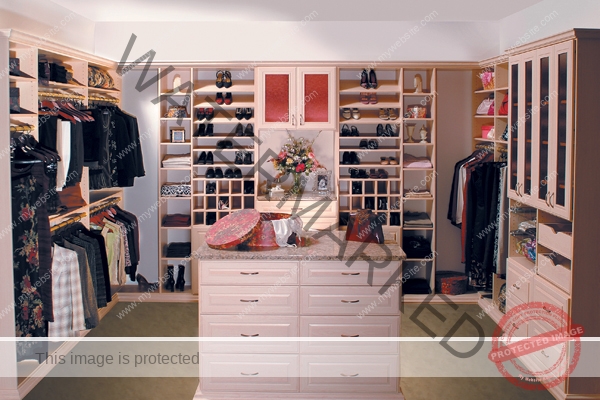Organizing Your Closet
Label four boxes (bags will also do): TOSS, DONATE, SELL and FIX.
Obviously if you don’t plan to sell anything, then you won’t need that box. Feel free to add a box for any other relevant category (such as stuff you’ll give your sister, rather than donate). Then use the bed as a sorting area for items you plan to keep, making separate piles for shirts, pants, suits, skirts, dresses, etc.
Organizing Your Closet
Keep your closet in shape by treating it like a small room. Pay attention to lighting, wall color, and floor coverings.
Some tips for you designing and configuring your closet:
- Sort your wardrobe. Group each type of clothing (jackets, shirts, skirts, pants, and dresses) and hang them together on a rod or rack. Measure how much space is required for each category.
- Maximize space. Install rods where they are most useful. Position rods eleven to twelve inches from the back wall, allowing items twenty-two to twenty-four inches of depth and thirty-two to thirty-six inches of vertical hanging space.
- Install drawers. Small items like socks and scarves are best stores in drawers. Bear in mind, however, that drawers are the most expensive component of a closet. If you have a dresser elsewhere in the room, consider limiting or eliminating closet drawer space.
- Build in cubbies. Cubes are a see-at-a-glance solution for storing such items as sweaters, purses, hats, jeans, and shoes.
- Accessorize your closet. Add bells and whistles such as specialized racks for belts, ties, shoes, and bags, which keep these smaller items from becoming a jumble.
- Use every inch. Claim air rights by adding shelves above racks for extra storage. Hooks on closet doors afford quick access to frequently used items like tote bags.
- The nuts and bolts: Clothing can weight a lot. To avoid collapse, make sure to select the correct anchors when attaching rods and shelves. For Sheetrock walls, the anchors should be attached to the studs. For lath and plaster walls, use molly bolts, which have spring winged tips that expand once inserted into the wall and distribute weight better than a regular screw bolt. For plaster and brick walls, use lead or plastic shields.
Be Sociable, Share! Fort Lauderdale Cleaning Services





